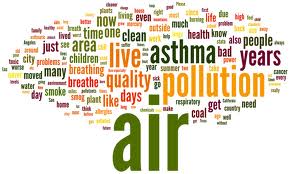Reducing global particulate matter pollution could save millions of lives
 Globally, more than 3.2 million premature deaths per year are attributed to due to exposure to ambient fine particulate matter.
Globally, more than 3.2 million premature deaths per year are attributed to due to exposure to ambient fine particulate matter.
A new study estimates that 2.1 million premature deaths could be avoided if countries achieved the WHO guideline for PM2.5. Even by meeting their closest WHO interim concentration targets could avoid 750 000 (23%) deaths attributed to PM2.5 per year.
Ambient fine particulate matter is defined as airborne particles with a diameter smaller than 2.5 micrometres (µm). These small particles penetrate deep into the lungs and may enter into the body and have been associated with heart disease, stroke, lung cancer and premature death. They can be made up of hundreds of different chemicals and are emanated from areas such as construction sites, fires, combustion in power plants and households, various industries, and automobiles.
The World Health Organization has issued a specific guideline value for ambient PM2.5, set at 10 ug/m3 as an annual average. It has further given interim targets concentrations for PM2.5 at 35, 25, 15 ug/m3 , target values that can be used by governments to approach the final guideline value of 10 ug/m3 in a stepwise manner. Ambient fine particulate matter ranks as the sixth largest overall risk factor for premature death globally.
In 2010, the Global Burden of Disease comparative risk assessment attributed 3.2 million deaths to PM2.5 ambient air pollution. Highly polluted areas such as Asia and India showed higher rates when compared to cleaner regions such as North America and Europe.
To help regulators and policymakers understand how meeting these different targets could avoid deaths, the researchers in the study calculated how many deaths could be avoided by using data on the spatial distribution of PM concentrations across the globe.
To get another perspective, they also analysed how much PM levels must be diminished to meet certain mortality reduction goals, such as 25% or 50%, as well as how to keep the mortality rate constant at 2010 levels.
The study found that limiting PM2.5 concentrations to WHO interim target levels 35, 25, 15, or of the guideline set at 10 µg/m3 , could avoid approximately 0.39, 0.73, 1.4, and 2.1 million annual premature deaths, respectively. Another strategy, called ‘next target’ (a country at 27 µg/m3 would try to get down to its closest lower target of 25 µg/m3 , for example) could save approximately 750 000 lives globally.
The study also revealed the impact of demographic factors and the (non-linear) exposureresponse function on PM2.5 mortality. Highly polluted areas require a greater reduction of PM2.5 than less polluted areas to achieve the same decrease in attributed mortality. In the most highly polluted areas, such as India and China, a 50% reduction in mortality would require a 68% reduction of PM2.5.
Conversely, a 50% mortality reduction in less polluted areas, such as Europe and North America, could be achieved through a reduction of just 25% of PM2.5. The researchers stress that initial improvements to ambient PM2.5 concentrations must be worked into long-term mitigation strategies, which will differ greatly between more or less polluted areas.
Population age structure should also be taken into account when planning mitigation policies, they say. In fact, if the world met the World Health Organization 10 µg/m3 target, nearly 70% of the total mortality avoided would be concentrated in East Asia and India because these areas are densely populated and currently experience high PM levels.
Importantly, the researchers say there is also high potential for reducing mortality in less polluted areas as well. Furthermore, there could also be positive impacts on climate change because PM2.5 mitigation may also reduce the emission of other accompanying pollutants, such as black carbon.
Source: Apte, J. S., Marshall, J. D., Cohen, A. J. & Brauer, M. (2015). Addressing Global Mortality from Ambient PM2.5. Environmental Science & Technology 49(13): 8057- 8066. DOI:10.1021/acs.est.5b01 236. “Science for Environment Policy”: European Commission DG Environment News Alert Service



